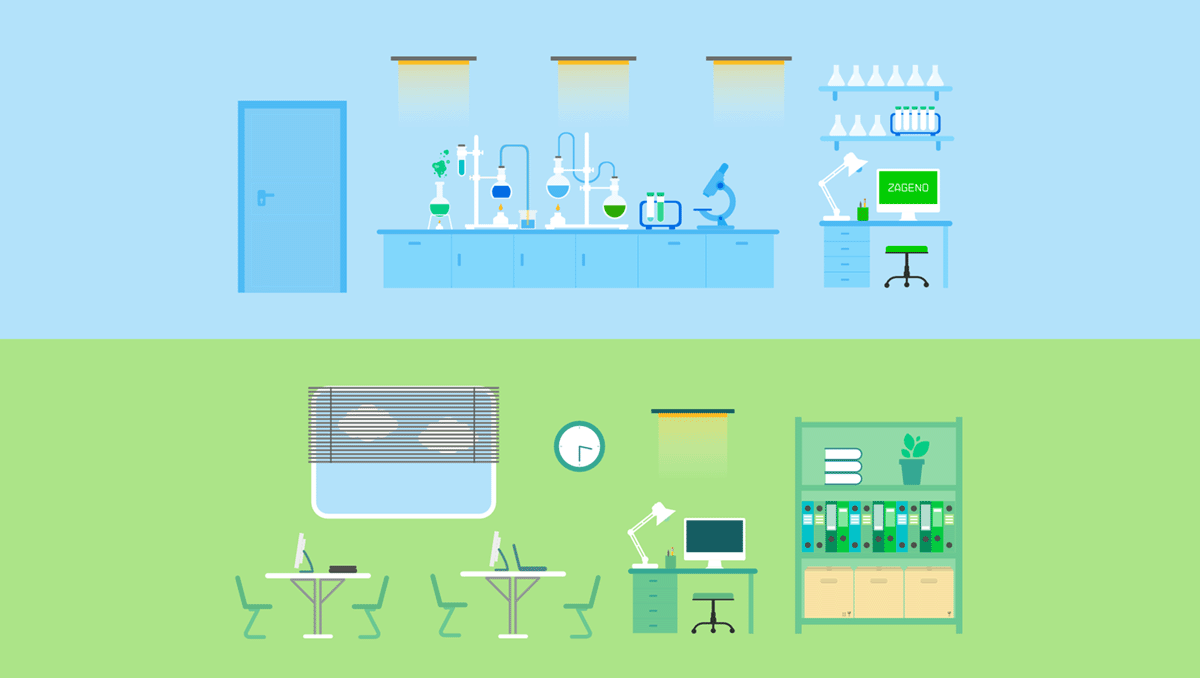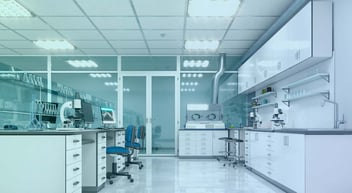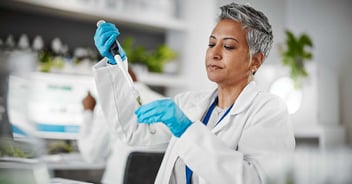Whether you are just starting to design your new lab or are looking to relocate your lab entirely, setting up your biotech lab is simple when you follow these 7 steps:
Layout
The layout of your biotech lab is the backbone of your organization. Carefully designed layouts are the key to ensuring your lab is as productive and efficient as possible. While you are in the design stage of setting up your lab, take these things into consideration when determining the layout:
- Supporting lab tech workflows
- Avoiding areas with potential bottlenecks
- Designing areas that support individual work and common areas for shared equipment
- Strategically placing frequently used materials on tables and carts near high-traffic lab stations
- Designating appropriate areas for short and long-term storage, including a fridge and freezer
- Placing all gas burners in fume hoods and designate areas for chemical storage and waste disposal
Storage + Organization of Supplies and Equipment
To set your lab techs up for success, organize supplies in your lab with intention. Supplies should be stored in temperature appropriate receptacles and be organized so that they can easily be found by anyone who needs them, with the most frequently used supplies being the most easily accessible.
To optimize the storage of your supplies, give every supply its own designated (and clearly labeled) spot. This will not only make it simple for your lab employees to find the supplies that they need, but it will also serve as a visual aid to help your lab managers more easily take accurate inventory. Keep an equipment locator document in a designated location that articulates where all supplies and equipment can be found in the lab. This helps introduce new lab staff to your storage system and helps everyone easily locate any and all equipment, materials, and supplies they require.
Waste Disposal
Practicing safe and appropriate waste disposal is an essential function of any biotech lab. Similar to chemical storage, all waste disposal receptacles should remain in a specific area of your lab. The location should be known by all lab staff and clearly marked with signage. You will also need to provide readily available personal protective equipment (PPE) if needed to handle waste. Every state and district has their own waste disposal guidelines that all labs must follow, which typically includes:
- Hazardous waste must be collected by a certified service
- Waste must be labeled with type, concentration, and date of disposal
- Hazardous waste must only be placed in biohazard bags, with a half full maximum capacity
- No waste should go down the drain
Collaborative Areas
Depending on the expected daily use of your lab, you may want to design your lab to support collaborative stations and areas, especially in our increasingly remote scientific community. Collaborative areas are designed to be an inclusive space where your lab staff can have team meetings, brainstorming sessions, or spur of the moment hybrid meetings. These collaborative areas should be large enough to accommodate multiple lab techs at a time, while avoiding bottlenecks. In the age of increased remote and hybrid work, these collaborative lab areas would also benefit from being compatible with virtual communication and collaboration tools for labs.
Permits and Licenses
Before you can begin working in your lab you first need to acquire the necessary permits and licenses for the work itself. These permits may vary depending on where your lab is located and they have the potential to take a long time to acquire, so thorough research and planning ahead is key. Depending on your location, you may need to obtain these permits and licenses amongst others:
- rDNA permits
- Waste permits
- Biohazard waste disposal contracts
- Building occupancy permits
- Pest control contracts
Access, Gas, Hookups, Ventilation
Final preparation for your biotech lab is to ensure that your lab space has adequate access, gas, hookups, and ventilation. Where these are located in your lab will be up to you and depend on your expected lab usage, but as a general rule of thumb you can start with fume hoods. Your fume hoods should have gas, electricity, water, and a sink and be kept out of high traffic areas. Another mandatory aspect is your ventilation system. The goal with ventilation systems is to choose one with the ability to completely change the air in the lab in five minutes. Remember, fume hoods are not designed for full lab ventilation.
Are you in the process of moving your lab? Instead of moving your lab alone, trust an experienced lab relocation service to relocate your biotech lab for you, so you can focus on the research that matters.




